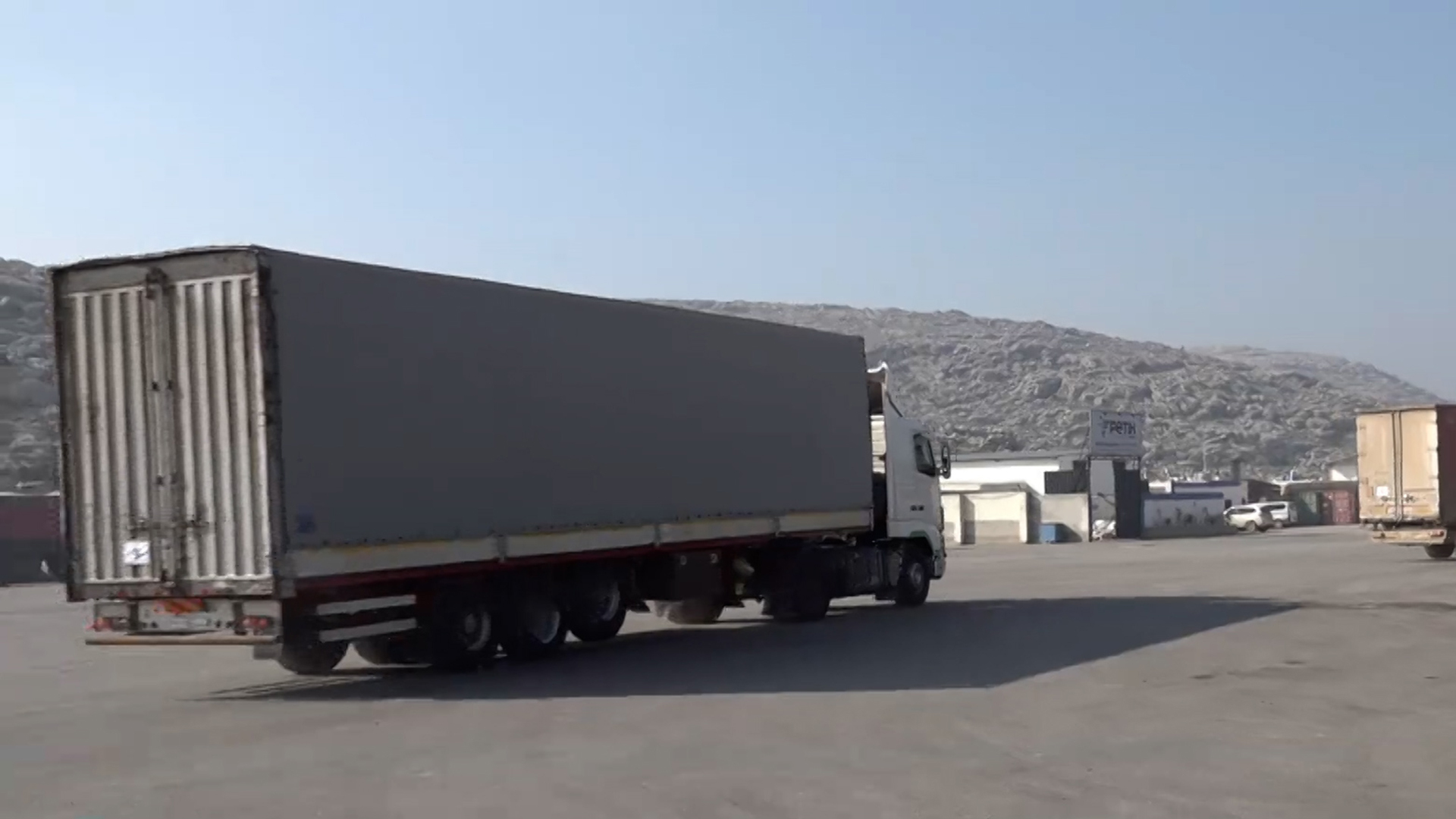Northern Syria -
With the catastrophe of the devastating earthquake that struck northern Syria and southern Turkey last week, attention is turning again to the Bab al-Hawa border crossing with Turkey, which represents the only lifeline for millions of Syrians in the opposition-held areas in the northwest of the country.
Convoys of UN humanitarian aid sent by the United Nations, in addition to many international and local humanitarian organizations, flow through the crossing linking southern Turkey and Idlib governorate in northwestern Syria.
Qatari aid containing relief materials, food, tents and winter clothes (Al-Jazeera Net)
How did the crossing movement look like since the earthquake began?
In light of the earthquake, the killing of thousands of Syrians, and the displacement of thousands of families in the open, the people in northwestern Syria expected that the crossing would witness a massive influx of relief and humanitarian aid convoys to help the afflicted and provide them with aid, while the numbers to date have contradicted expectations.
A week after the devastating earthquake that struck the two countries, the director of the media office at Bab al-Hawa crossing, Mazen Alloush, confirms that no UN rescue equipment has entered to contribute to the rescue operations of those trapped under the rubble of destroyed buildings, at a time when the rescue teams from the Syrian Civil Defense relied on the available local capabilities, amid Widespread criticism of the United Nations and its negligence in this aspect.
Alloush said in an interview with Al-Jazeera Net that the crossing was not damaged during the period of the earthquake and aftershocks that continue until today, adding that work stopped for 3 days, because most of the workers in it from the Turkish side live in Hatay state, before resuming work on the fourth day in part and entering UN trucks were scheduled to enter before the earthquake.
UN convoys containing generators and tent supplies arrived at the crossing (Al-Jazeera Net)
How many convoys have crossed since the earthquake disaster?
What did it include?
As of Monday, about 58 trucks provided by the United Nations entered through the Bab al-Hawa crossing into northwestern Syria, and they included cleaning equipment, tent supplies, generators, some medicines and medical tools, with the absence of any equipment related to the issue of the earthquake, according to the Bab al-Hawa crossing administration.
Turkish charities also sent about 30 trucks that included flour and heating materials.
From the State of Qatar, 7 trucks arrived, including aid containing relief and food items, tents and winter clothes, in addition to a Qatari medical delegation that entered the areas controlled by the Syrian opposition.
How does the crossing administration respond to the position of the United Nations?
The director of the media office at the Bab al-Hawa crossing, Mazen Alloush, confirmed that the crossing is ready to receive 1,000 trucks per day, as it has yards to receive large numbers of convoys, denying what the United Nations reported about the inability of the Syrian opposition to receive convoys and the damage to the roads to the crossing.
Alloush indicated that the United Nations, until this moment, is still using double standards, and is working to politicize the file of humanitarian aid for the victims of the earthquake in Syria by providing support to the Syrian regime in return for leaving millions of Syrians in northwestern Syria.
Turkish charities sent about 30 trucks, including flour and heating materials (Al-Jazeera Net)
Is the crossing the focus of political tensions?
The crossing has often been a focus of political tensions between the countries allied to the Syrian regime - especially Russia and China - and others that support and are friendly to the Syrian people, most notably Turkey and the United States. This has turned into a political pressure card between the parties in the corridors of the Security Council at the expense of the humanitarian aspect and the lives of millions of Syrians.
With the exacerbation of the humanitarian crisis in Syria and the emergence of the issue of the displaced to the camps, the Security Council approved in 2014 allowing the passage of UN humanitarian aid through 4 land crossings in Syria: Bab al-Salamah, Bab al-Hawa with Turkey, al-Yarubiyah with Iraq, and al-Ramtha with Jordan.
In early 2020, the Security Council voted in favor of a resolution allowing the passage of UN aid through Turkish territory through the Bab al-Hawa and Bab al-Salama crossings, which caused the closure of two crossings in northeastern and southern Syria.
In July 2020, Russia vetoed the passage of humanitarian aid through the Bab al-Salama crossing, limiting its entry to a single crossing since that time, the Bab al-Hawa crossing, amid constant Russian threats to close it and use it as a political card against the Syrian opposition and its allies.
With the end of the authorization periods each year, more than 4 million Syrians hold their breath waiting for the renewal of the crossing mechanism, in the middle of a region that has been suffering for nearly 12 years from the scourge of war and successive economic and humanitarian crises.

